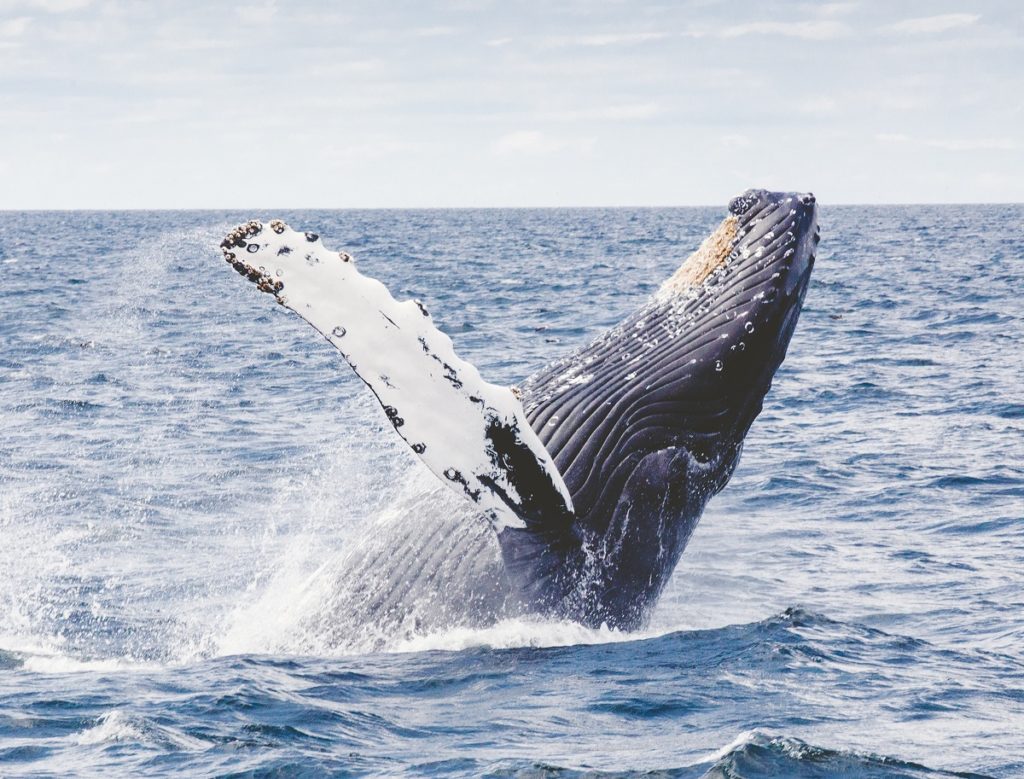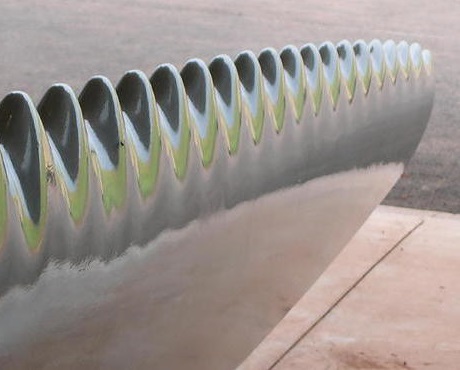Biomimicry, the short version
Biomimicry is the practice of using designs and technologies found in living beings to make more durable and efficient human technologies. Ultimately, biomimicry advocates observe that life on Earth has developed incredibly sophisticated, and tested, designs through the natural process of evolution. Why not use the wisdom earned through evolution to inform new human technologies?
Biomimicry, the longer version
The process of evolution has been a wildly successful approach to developing tried-and-true ways of surviving and flourishing on Earth. All life forms on Earth, over a matter of millennia and eons, have slowly adapted new features of their biology to get food more efficiently, travel faster and more silently, communicate with one another, cool themselves in hot climates, warm themselves in cold climates, and so on.
So when we see the architecture of a bird’s wing or a termite mound or a whale’s fin, we can know that it is highly-optimized to advance that species’ survival and to perform its given task as efficiently as possible. It has been tested over and over and over. Lesser designs have gone the way of the dodo, leaving only the truly well-adapted left for us to behold.
Biomimicry – or biomimetics – is a design practice and discipline that seeks to use nature-based and nature-tested designs to inform new human technologies and innovations. In essence, biomimicry says “Nature has already made great designs for so many things. Let’s copy them into our own designs.”
As just one example, we have made great strides in turbine technology (e.g., the design of the blades of wind power turbines) by mimicking the shape of whales’ fins. While most turbine blades have been smooth and straight, designers have found that they can greatly increase the efficiency by mimicking the bumpy pattern of a whale’s fin.


The wind turbine blades informed by whale fine design require lower wind speeds, thus increasing the amount of time and the number of locations where they can actively generate electricity. Would we have figured this out without observing whale design? Perhaps, but not nearly as quickly.
Similarly, in Japan, high-speed trains have become more efficient and less noisy by mimicking the shape of a bird’s beak. Buildings have improved natural cooling and air flow by mimicking termite mounds. Needles for medical applications require less force (and pain) by mimicking mosquitos.
And this is just the tip of the iceberg! If we invest the time and money in exploring nature’s design, there are myriad ways we can make human society more efficient, sustainable, and prosperous.
That’s biomimicry in a nutshell. Nature has already field-tested thousands of designs for us. Why not make use of them?
Biomimicry, in practice
The Biomimicry Institute is a 501(c)(3) non-profit organization based in Missoula, Montana. The Institute’s mission is to naturalize biomimicry in the culture by promoting the transfer of ideas, designs, and strategies from biology to sustainable human systems design.
The Institute was founded in 2006 by Janine Benyus and Bryony Schwan to share nature’s design lessons with the people who design and make our world. It began by working directly with educators from K-12, university, and non-formal (museums, zoos, aquariums) environments to naturalize biomimicry in the educational system, and ensure the next generation of changemakers had the tools to integrate biomimicry in their careers.
The Institute offers several lesson plans, classroom exercises, and educator training courses on its Biomimicry Education Network website. In 2008, it launched a free, online catalog of nature’s solutions to design challenges called AskNature.
Learn more at: biomimicry.org
Recommended reading
Biomimicry: Innovation Inspired by Nature
by Janine Benyus
Science writer and lecturer Janine Benyus takes us into the lab and out in the field with cutting-edge researchers as they stir vats of proteins to unleash their computing power; analyze how electrons zipping around a leaf cell convert sunlight into fuel in trillionths of a second; discover miracle drugs by watching what chimps eat when they’re sick; and more.



I find it amazing how when I was looking for something something in the world news this morning that would be inspiring and nice to read i came across this site and glad i did.
Good job and thankyou for helping me see there are some good people paying attention to how the world works…
Look forward to seeing more and hopefully people will realize this is how the world works for us and just about everything that we have time to pay attention to in our surroundings.